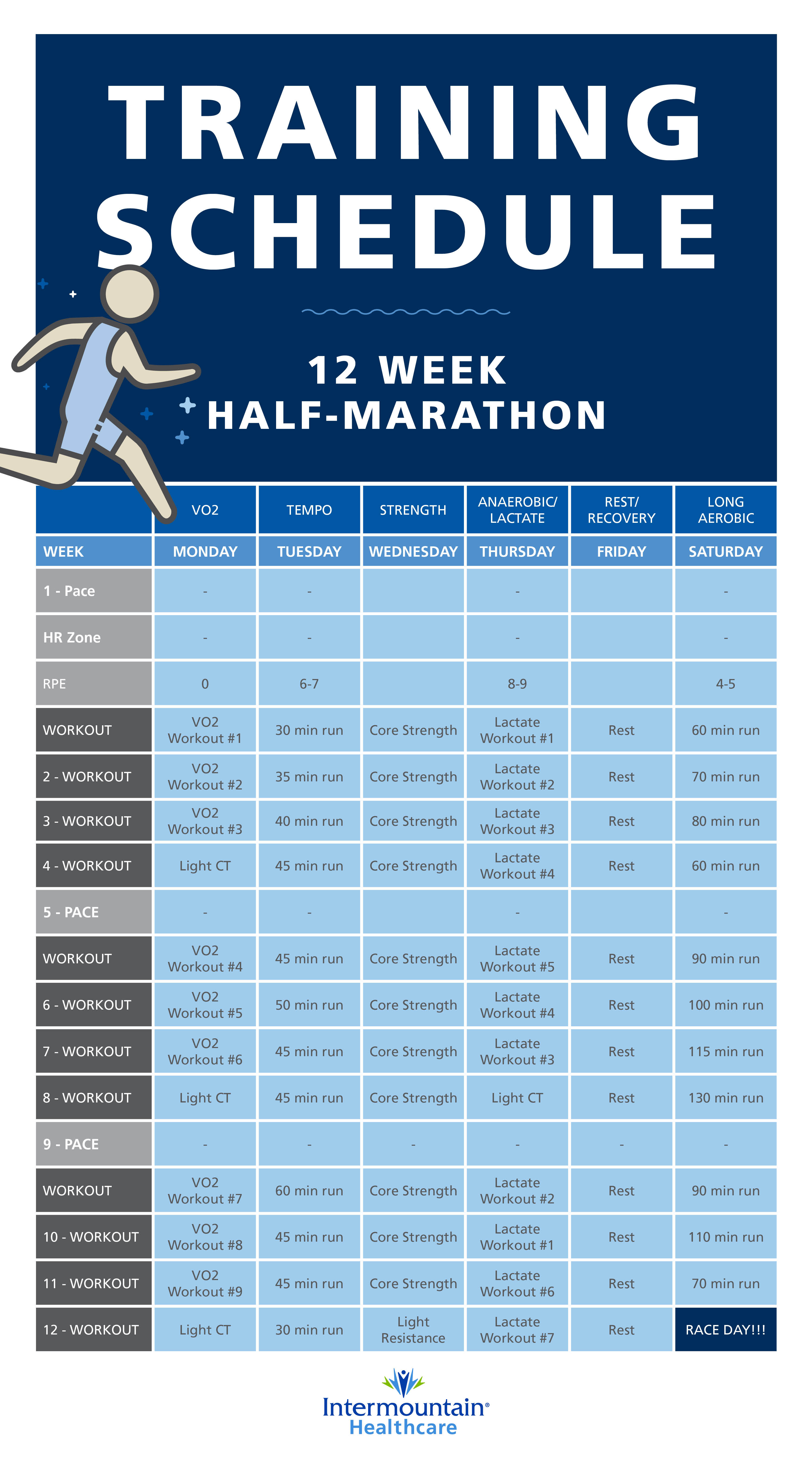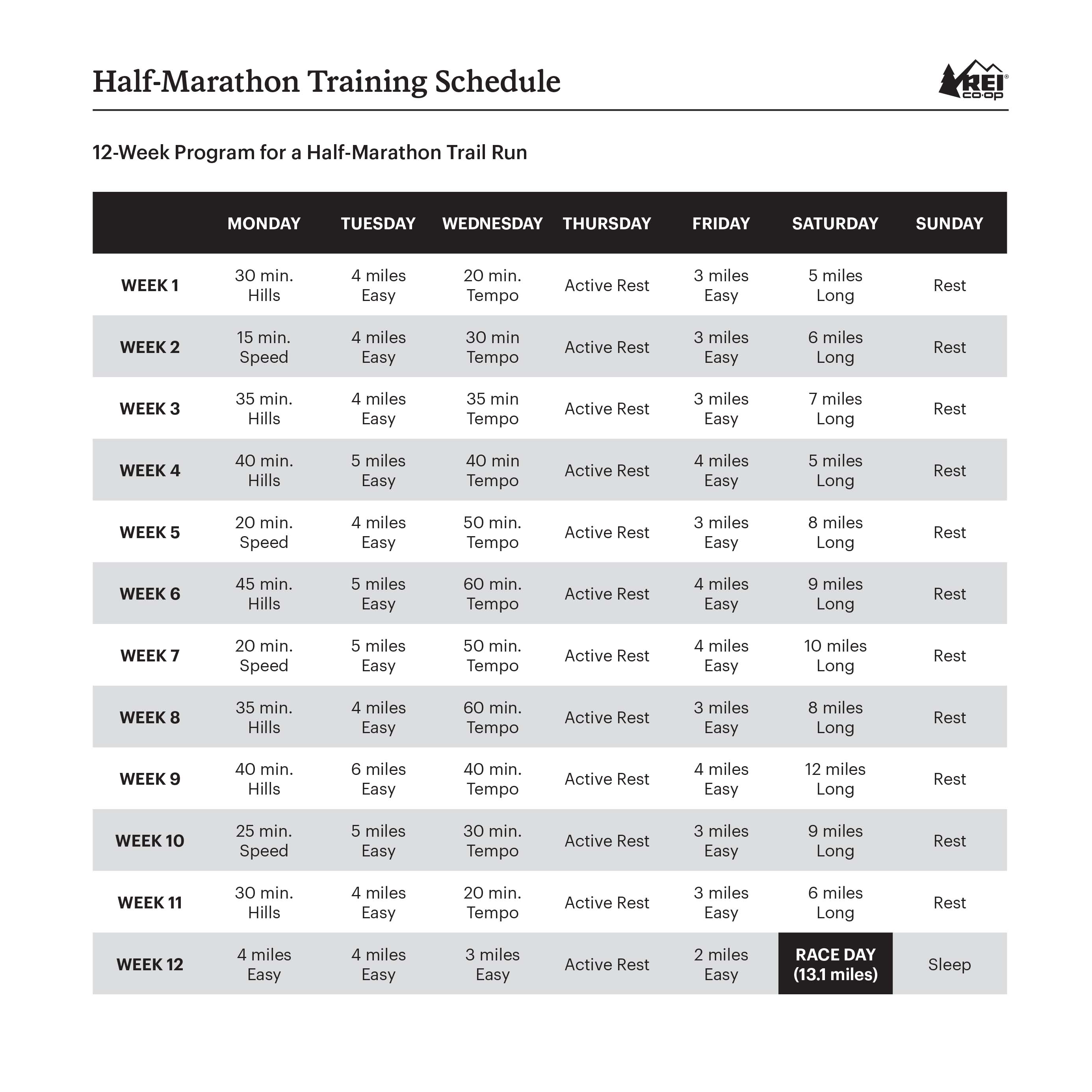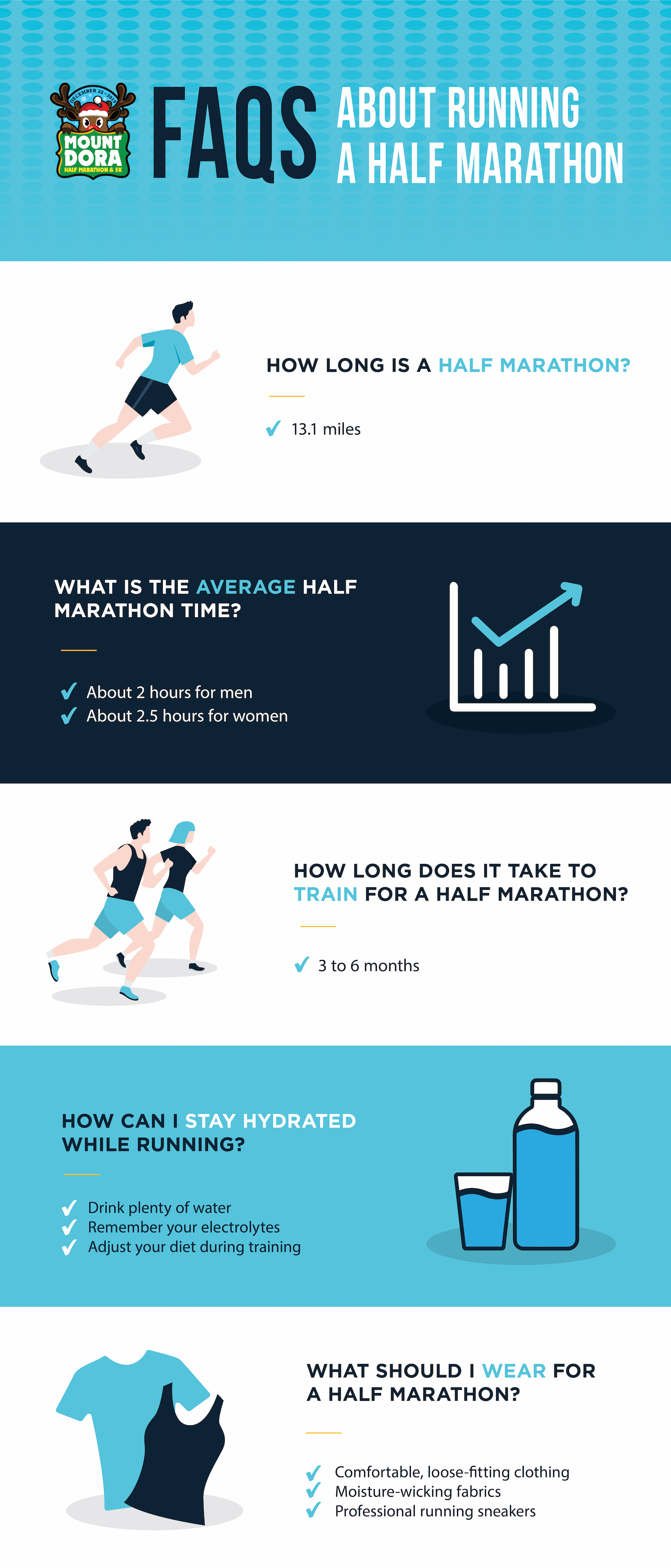Selecting the Ideal Half Marathon Program: A How-To Approach
Embarking on a half marathon journey requires careful planning and commitment. A well-structured half marathon program serves as the foundation for a successful race experience. To choose the most suitable half marathon program, consider several factors, including personal fitness level, running goals, and time constraints.
First, assess your current fitness level. If you are new to running or have limited experience, opt for a beginner-focused half marathon program. These programs typically span 12 to 20 weeks and gradually build your endurance and stamina. Intermediate and advanced runners may select more challenging programs, incorporating higher mileage, speed work, and hill training.
Next, define your running goals. Are you aiming to complete the half marathon distance, or do you aspire to achieve a personal best time? Half marathon programs vary in intensity and focus, so selecting a program that aligns with your objectives is crucial. For instance, if your goal is to improve your speed, prioritize programs that emphasize interval training and tempo runs.
Lastly, consider your time constraints. A balanced half marathon program should allow for adequate recovery and cross-training. Overloading your schedule with excessive running may lead to injury or burnout. Ensure that your chosen program integrates rest days and recovery weeks to maintain a healthy balance.
In summary, selecting the ideal half marathon program involves evaluating your fitness level, defining your running goals, and considering your time constraints. By carefully considering these factors, you can lay the groundwork for a rewarding and successful half marathon experience.
Key Components of a Half Marathon Program: Building a Strong Foundation
A well-rounded half marathon program forms the cornerstone of a successful race experience. To build a strong foundation, incorporate the following essential elements:
- Base mileage: Gradually increasing your weekly mileage is crucial for improving endurance and stamina. Aim to increase your mileage by no more than 10% each week to reduce the risk of injury. Maintaining a consistent base mileage during the early stages of your half marathon program will establish a solid foundation for the more intense training sessions to come.
- Long runs: Long runs are a staple of any half marathon program. These runs, typically performed at a comfortable pace, help build endurance and teach your body to efficiently utilize fuel during extended efforts. Schedule one long run per week, increasing the distance by 1 to 2 miles each time. Aim to complete at least one 10-mile run before the start of your taper period.
- Speed work: Incorporating speed work into your half marathon program can help improve your overall running pace and enhance race-day performance. Examples of speed work include interval training, tempo runs, and hill repeats. Schedule one to two speed work sessions per week, allowing adequate recovery time between sessions.
- Recovery days: Rest and recovery are vital components of any training program. Incorporate recovery days into your half marathon program to allow your body to adapt to the increased workload and reduce the risk of injury. Schedule easy runs, cross-training activities, or complete rest days to facilitate recovery.
By integrating these key components into your half marathon program, you will build a strong foundation and optimize your chances of success on race day. Remember to listen to your body, make adjustments as needed, and maintain a positive attitude throughout your training journey.
Finding the Perfect Balance: Integrating Half Marathon Training with Lifestyle
Balancing half marathon training with daily life is crucial for maintaining both physical and mental well-being. By employing effective time management strategies, incorporating cross-training activities, and optimizing your nutrition, you can ensure a harmonious blend of training and daily responsibilities. Here are some tips to help you find the perfect balance:
Time management
Prioritizing your time is essential when integrating half marathon training into your daily routine. Consider the following time management strategies:
- Create a weekly schedule that includes your training plan, work, family, and social obligations.
- Schedule your runs at the same time each day to establish a consistent routine.
- Designate specific days for long runs, speed work, and recovery activities.
- Allow for flexibility in your schedule to accommodate unexpected changes or challenges.
Cross-training
Cross-training activities, such as swimming, cycling, or strength training, can complement your running schedule and help prevent injury. Incorporate cross-training activities into your routine on recovery days or as a substitute for running when time is limited.
Nutrition
Proper nutrition plays a vital role in half marathon training. Focus on consuming a balanced diet that includes carbohydrates, proteins, and healthy fats. Ensure that you are properly fueled before, during, and after your runs to optimize performance and recovery. Additionally, stay hydrated throughout the day and during your training sessions.
By implementing these strategies, you can effectively balance half marathon training with your daily life. Remember to remain adaptable, listen to your body, and make adjustments as needed to maintain a healthy and sustainable training routine.
Assessing Your Progress: Periodic Evaluations and Adjustments
Regular assessments are crucial during half marathon training to monitor progress, identify areas for improvement, and make necessary adjustments to your program. By evaluating your performance consistently, you can ensure that your training remains effective and aligned with your running goals. Here are some guidelines for conducting periodic assessments:
Set performance benchmarks
Establish clear performance benchmarks for yourself, such as completing a certain distance within a specific timeframe. These benchmarks will help you track your progress and identify areas where you may need to improve.
Monitor your running pace
Track your running pace during training sessions to assess your fitness level and endurance. Aim to gradually reduce your pace for a given distance as your training progresses. This will help ensure that you are making consistent progress and becoming stronger as a runner.
Assess your energy levels
Pay attention to your energy levels during and after training sessions. If you find that you are consistently fatigued or struggling to complete workouts, it may be necessary to adjust your half marathon program to allow for additional recovery time or reduced mileage.
Evaluate your body’s response to training
Listen to your body and take note of any aches, pains, or injuries that may arise during training. If you experience persistent discomfort or pain, consult a medical professional and consider modifying your half marathon program to accommodate any necessary adjustments.
Adjust your program as needed
Based on your assessments, make any necessary adjustments to your half marathon program. This may include increasing or decreasing mileage, altering the frequency of speed work sessions, or incorporating additional recovery days. Remember that flexibility and adaptability are key components of a successful training program.
By conducting regular assessments and making adjustments as needed, you can optimize your half marathon training experience and ensure that you are well-prepared for race day. Stay committed to your training program, and remember to celebrate your progress along the way.
Preparing for Race Day: Tapering and Final Preparations
Tapering is an essential component of any half marathon training program, allowing your body to recover and prepare for race day. By strategically reducing your mileage and intensity during the final weeks of training, you can optimize your performance and minimize the risk of injury. Here are some tips for effectively tapering and preparing for your half marathon:
Gradually reduce mileage
Begin tapering by gradually reducing your weekly mileage. Aim to decrease your mileage by approximately 10-20% every week during the tapering period. This will allow your body to recover from the demands of training while maintaining your fitness level.
Maintain intensity
While reducing your overall mileage, maintain the intensity of your workouts. Incorporate speed work, hill repeats, or tempo runs into your tapering schedule to preserve your anaerobic capacity and running form.
Prioritize rest and recovery
During the tapering period, prioritize rest and recovery. Schedule regular rest days, engage in gentle stretching or yoga, and ensure that you are getting adequate sleep. This will help your body recover and prepare for race day.
Stay hydrated and fueled
Maintain proper hydration and nutrition throughout the tapering period. Focus on consuming a balanced diet that includes carbohydrates, proteins, and healthy fats. Additionally, stay hydrated by drinking water or electrolyte-rich beverages throughout the day.
Visualize success
Mental preparation is crucial for half marathon success. Spend time visualizing yourself crossing the finish line, overcoming challenges, and achieving your running goals. This will help build confidence and reduce anxiety on race day.
By effectively tapering and preparing for your half marathon, you can optimize your performance and enjoy a successful race day experience. Stay committed to your training program, and remember to trust in your abilities and the power of your preparation.
Top Half Marathon Training Programs: A Comparative Analysis
Choosing the right half marathon training program can significantly impact your race day experience. With numerous options available, it’s essential to compare programs and select the one that best aligns with your fitness level, running goals, and time constraints. Here, we review three popular half marathon training programs:
Hal Higdon’s Novice 1 Program
Hal Higdon’s Novice 1 program is designed for beginners and consists of 12 weeks of training. This program gradually builds your base mileage, incorporates one long run per week, and includes two rest days. While it does not include speed work, it provides a solid foundation for new runners preparing for their first half marathon.
Jeff Galloway’s Half Marathon Program
Jeff Galloway’s half marathon program is based on the run-walk-run method and is suitable for runners of all levels. This 12-week program includes three runs per week, with one long run, one mid-week run, and one shorter run. The run-walk-run method helps reduce the risk of injury and fatigue, making it an excellent option for runners looking to minimize stress on their bodies.
Hanson’s Half Marathon Method
Hanson’s Half Marathon Method is a more advanced 18-week program that focuses on building strength and endurance. This program includes six days of running per week, with an emphasis on high-intensity workouts and moderate mileage. Hanson’s method is best suited for experienced runners seeking a challenging and structured training program.
When selecting a half marathon training program, consider your personal fitness level, running goals, and time constraints. By carefully evaluating each program’s strengths, weaknesses, and applicability, you can choose the one that best supports your journey to race day success.
Real-Life Success Stories: Learning from Experienced Runners
Exploring the experiences of runners who have successfully completed half marathons can provide valuable insights and inspiration for those embarking on their own half marathon journey. Here, we share the stories of three individuals who achieved their running goals using different training programs:
Sarah’s Journey: From Couch to Half Marathon
Sarah, a busy working mother, decided to challenge herself by running a half marathon. She chose Hal Higdon’s Novice 1 program due to its beginner-friendly approach and manageable time commitment. By following the program’s gradual increase in mileage and incorporating regular cross-training, Sarah successfully completed her first half marathon in 2:25:37.
Mike’s Story: Overcoming Injury with the Galloway Method
Mike, an experienced runner, had struggled with injuries in the past. Hoping to avoid setbacks, he opted for Jeff Galloway’s half marathon program, which emphasizes the run-walk-run method. By incorporating walk breaks into his training, Mike was able to build endurance while minimizing the risk of injury. He completed his half marathon in 1:58:46, a personal best.
Emily’s Transformation: From Casual Runner to Half Marathoner
Emily, a casual runner, wanted to push herself by tackling a half marathon. She chose Hanson’s Half Marathon Method, which focuses on building strength and endurance. By committing to the program’s challenging schedule and intense workouts, Emily improved her running form and stamina. She crossed the finish line in 2:01:14, a time she never thought possible.
These success stories demonstrate that with dedication, consistency, and the right half marathon program, runners of all levels can achieve their goals. By learning from the experiences of others, you can gain the confidence and motivation needed to conquer your own half marathon journey.
Overcoming Challenges: Navigating Common Half Marathon Training Obstacles
Navigating the challenges that arise during half marathon training is crucial for success on race day. Here, we address three common hurdles faced during half marathon training—injury, burnout, and motivation loss—and offer practical solutions and coping strategies:
Injury
Injuries can derail even the most dedicated runners. To minimize the risk of injury, prioritize proper running form, gradually increase mileage, and incorporate cross-training activities that strengthen complementary muscle groups. If an injury does occur, consult a medical professional and consider adjusting your training program to accommodate recovery and rehabilitation.
Burnout
Burnout can result from the monotony of training or an overly aggressive schedule. To prevent burnout, vary your workouts, incorporate rest days, and engage in activities that promote mental and physical relaxation. Additionally, consider joining a running group or participating in local races to maintain enthusiasm and motivation.
Motivation Loss
Motivation loss is a common challenge during half marathon training. To maintain motivation, set realistic goals, track progress, and celebrate achievements. Share your training journey with friends and family, and seek support from the running community. Finally, remind yourself of the personal growth, self-discipline, and satisfaction that come from committing to and completing a challenging endeavor like a half marathon program.
By acknowledging and addressing these common challenges, you can develop the resilience and determination needed to overcome obstacles and achieve your half marathon goals.







